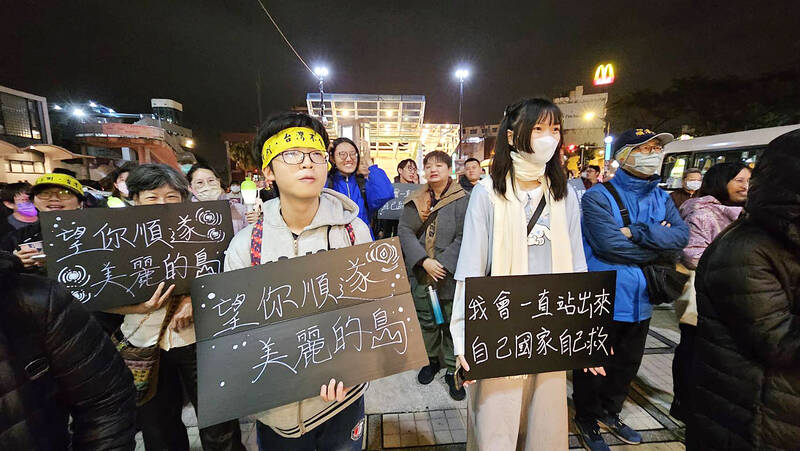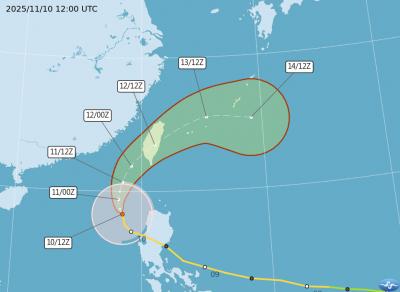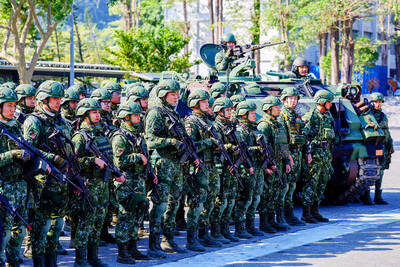Activist groups commenced a new series of “Bluebird movement” activities in Taoyuan on Monday night, beginning nationwide public forums and recall drives aiming to oust Chinese Nationalist Party (KMT) legislators who “rammed through three amendments to destroy Taiwan’s democracy.”
At a parking lot behind Taoyuan Railway Station, Economic Democracy Union (EDU) convener Lai Chung-chiang (賴中強) criticized “those power-abusive KMT legislators” and told the audience that “we must hold them accountable for their actions in the legislature... We cannot allow them to deprive us of our democratic rights and to steal Taiwan’s democracy.”
Lai called on those present to join a civil disobedience and resistance campaign to fight what he called the “extremist group” in the KMT led by caucus whip Fu Kun-chi (傅?萁).

Photo: Lin Min-chen, Taipei Times
“This Fu extremist group has carried out so many political maneuvers that the result is a serious crisis facing society and the government. It is not like the old days when the KMT regime imposed martial law and it had total control of the Legislative Yuan. It is time for the democracy movement to rise up again,” Lai said.
He concluded his address by getting the audience, estimated at more than 800, to shout out the slogans: “Defend Taiwanese democracy” and: “Oust KMT legislators,” before outlining a series of “Bluebird movement” activities in cities and counties nationwide.
After launching recall drives against KMT legislators elected in Taoyuan, events are also scheduled in New Taipei City on Thursday next week, in Taichung on Jan. 8, and in Hsinchu and Miaoli counties on Jan. 15, Lai said, adding that there are also plans for activities in Hualien and Taitung counties, but the dates are still under consideration.
EDU and Taiwan Citizen Front officials said they are working to organize three main activities — launching recall drives, civil disobedience and holding KMT legislators accountable at public events.

The Central Weather Administration (CWA) today issued a sea warning for Typhoon Fung-wong effective from 5:30pm, while local governments canceled school and work for tomorrow. A land warning is expected to be issued tomorrow morning before it is expected to make landfall on Wednesday, the agency said. Taoyuan, and well as Yilan, Hualien and Penghu counties canceled work and school for tomorrow, as well as mountainous district of Taipei and New Taipei City. For updated information on closures, please visit the Directorate-General of Personnel Administration Web site. As of 5pm today, Fung-wong was about 490km south-southwest of Oluanpi (鵝鑾鼻), Taiwan's southernmost point.

Almost a quarter of volunteer soldiers who signed up from 2021 to last year have sought early discharge, the Legislative Yuan’s Budget Center said in a report. The report said that 12,884 of 52,674 people who volunteered in the period had sought an early exit from the military, returning NT$895.96 million (US$28.86 million) to the government. In 2021, there was a 105.34 percent rise in the volunteer recruitment rate, but the number has steadily declined since then, missing recruitment targets, the Chinese-language United Daily News said, citing the report. In 2021, only 521 volunteers dropped out of the military, the report said, citing

A magnitude 5.3 earthquake struck Kaohsiung at 1pm today, the Central Weather Administration said. The epicenter was in Jiasian District (甲仙), 72.1km north-northeast of Kaohsiung City Hall, at a depth of 7.8km, agency data showed. There were no immediate reports of damage. The earthquake's intensity, which gauges the actual effects of a temblor, was highest in Kaohsiung and Tainan, where it measured a 4 on Taiwan's seven-tier intensity scale. It also measured a 3 in parts of Chiayi City, as well as Pingtung, Yunlin and Hualien counties, data showed.

Nearly 5 million people have signed up to receive the government’s NT$10,000 (US$322) universal cash handout since registration opened on Wednesday last week, with deposits expected to begin tomorrow, the Ministry of Finance said yesterday. After a staggered sign-up last week — based on the final digit of the applicant’s national ID or Alien Resident Certificate number — online registration is open to all eligible Taiwanese nationals, foreign permanent residents and spouses of Taiwanese nationals. Banks are expected to start issuing deposits from 6pm today, the ministry said. Those who completed registration by yesterday are expected to receive their NT$10,000 tomorrow, National Treasury